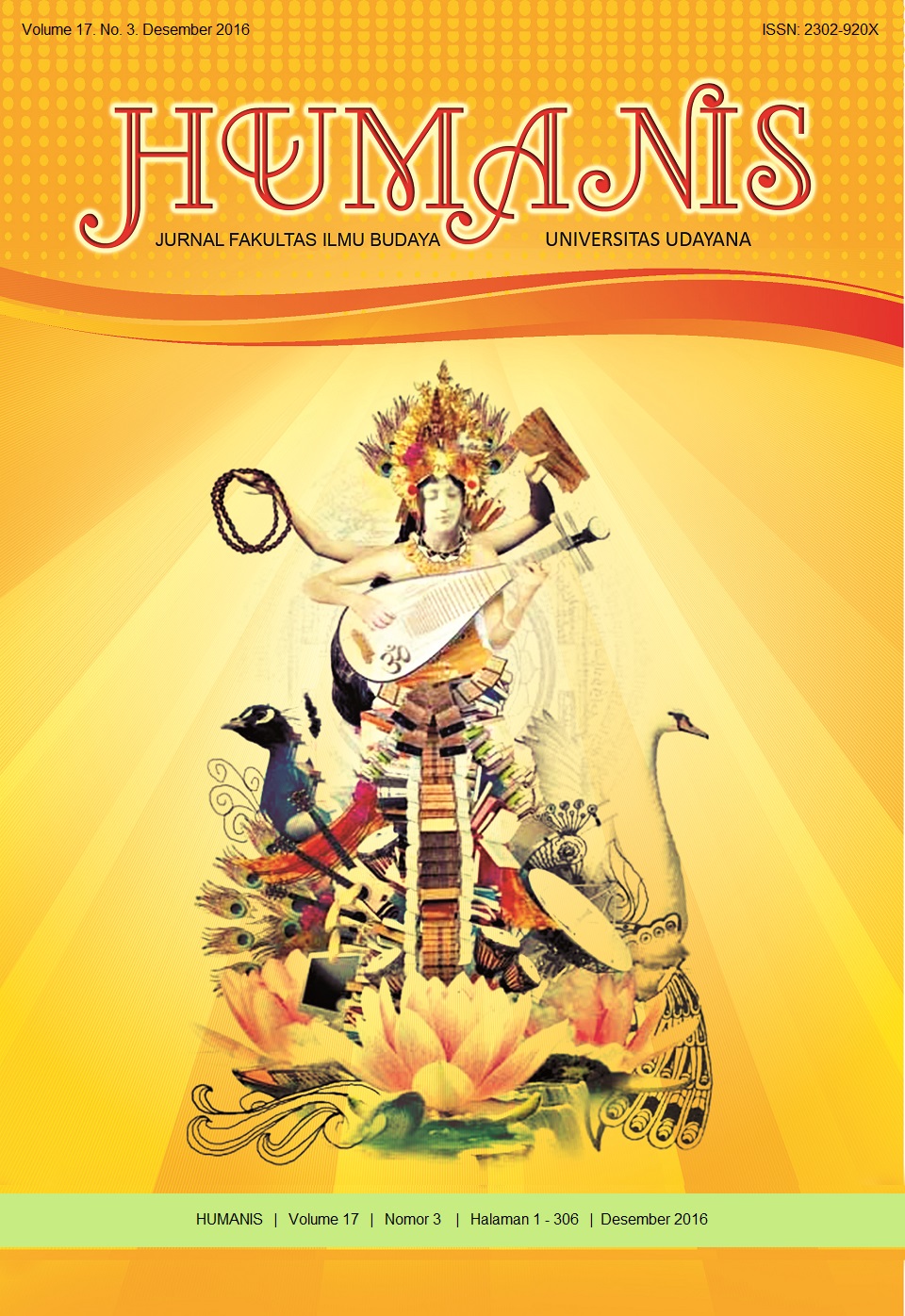Tutur Pabratan Analisis Struktur, Fungsi , dan Makna
Abstract
This study discusses the Analysis Pabratan Structure, Function and Meaning. The aim to describe the structure, function, and meaning contained in said pabratan. The theory used in this research is the structural theory, the theory of functions according to Luxemburg, and the theory of semiotics according to pierce. The methods used can be divided into three stages, the first stage of the provision of data, in this first stage used methods refer assisted with recording techniques and translation techniques. Second, the data processing stage, in this stage is used descriptive analytic method assisted with recording techniques, and the third is a stage presentation of the results of data analysis at this stage is used informal methods. The results obtained in this study is a structure consisting of a formal structure and content structure. Structure forma covers include: language diversity includes; Kawi Bali and the Balinese language and style guides include; includes language style; style assertion language, and comparison. Structure of the contents of the first part; begins with a prayer and the initial explanation of the content of speech; part of an early transition to the contents; an early introduction to the content, content; contains teachings eyelash control (mind), the final part; is the final part, which ended with teak kuni said. In addition there are functions include: didactic (educational) and religious functions, while their meanings include: religion (religious).


















